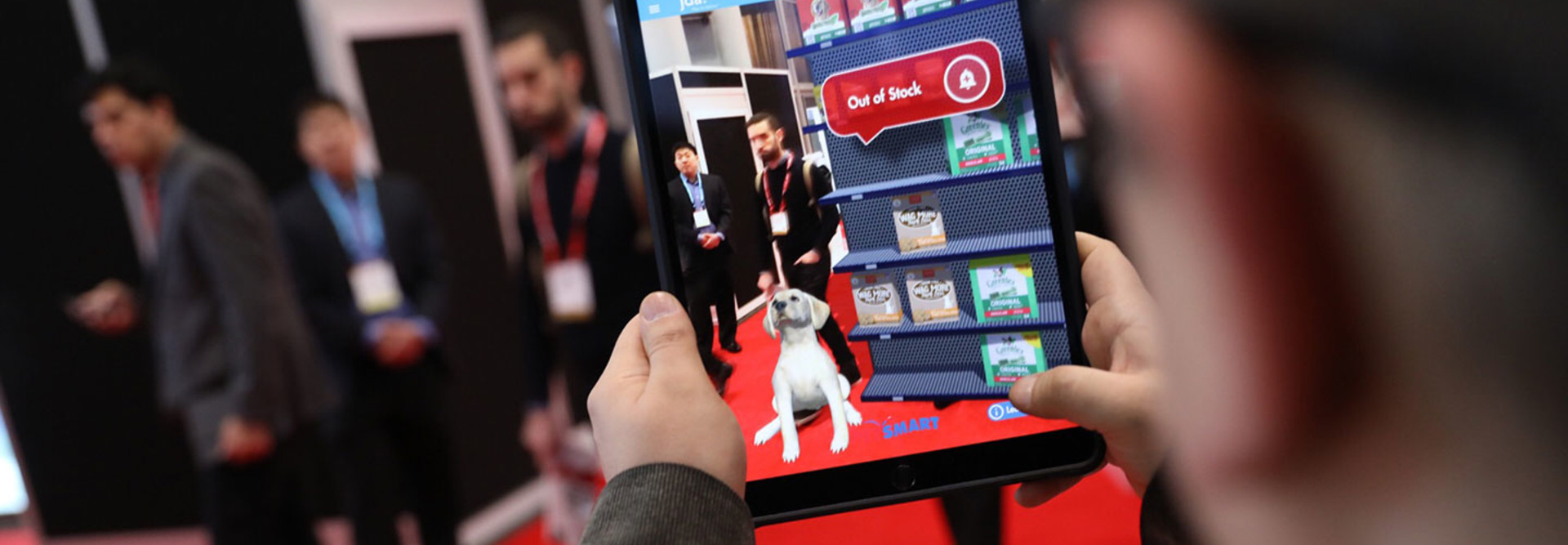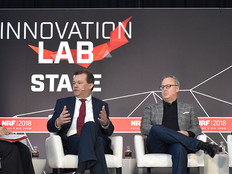NRF: How Retailers Will Power the Store of the Future
In today’s digital world, with social media constantly pulsing in the background, retailers can face a swift backlash from upset or dissatisfied customers.
“The worst-case scenario for a business is for one person to have a bad experience and tell everyone they know. Then those people tell everyone they know, and it spreads to almost half the planet,” said Hansang Bae, CTO of Riverbed Technology.
“Customers have a lot more power now than they did before, with the addition of social media,” Bae said during a session at NRF 2018: Retail’s Big Show in New York City on Jan. 14.
The retail market has become more fast-paced thanks to digital technology, which puts stress on businesses to respond, he said. Customers’ expectations for retail brands are increasing; now, in addition to highly customized products, they expect to have wireless service and rich digital content in physical stores.
All of this creates technology challenges for retailers, including wireless network security management and a push for increased broadband bandwidth. Retailers also must contend with store continuity challenges and the need to rapidly introduce new technology, Bae said.
“Thou shall have Wi-Fi, and it better be damn good!” he exclaimed. “Your customers not only expect it, they are demanding it — and you also need to make sure it’s not a hot button for hackers to exploit your customers.”
SIGN UP: Get more news from the BizTech newsletter in your inbox every two weeks!
The Tech Tools Retailers Want Moving Forward
What will the store of tomorrow look like? Riverbed asked 300 retail IT managers in the United States, Australia and Germany what they planned to invest in during the next 12 months. Among the top responses:
- The ability to rapidly expand locations (51 percent)
- Improvements to in-store wireless and mobile service for customers and employees (49 percent)
- Tools to better monitor users’ experience with customer apps (48 percent)
- Technology to ensure point-of-sale connectivity and continuity in stores (47 percent)
- New digital services and apps for customers and employees (47 percent)
- Enhanced productivity for enterprise mobility apps (45 percent)
Survey respondents also noted several technologies that they consider essential to the evolution of brick and mortar stores, including retail apps to track inventory (40 percent), virtual assistants (37 percent), mobile POS technology (35 percent), mobile apps with augmented reality (34 percent), and tools to personalize the in-store experience using customer loyalty data (34 percent).
Furthermore, 47 percent of the respondents said these technologies must be in place within three years.
But many stores don’t have technical expertise on location, said Bae, which presents a key challenge: “You need to monitor your point of sale so that you can recognize problems before they happen and affect your customers and your business.”
Streamline the Omnichannel Experience
Retailers must deliver a true omnichannel experience, with a seamless connection between the digital and physical store and real-time inventory management, Bae stressed.
He mentioned a grocery chain (likely referring to British chain Tesco) that tagged pictures of food items with QR codes and displayed them in subway stations in Seoul, South Korea. Customers who wanted their groceries delivered could scan the QR codes. Then, based on where the customers were in the subway system and where they lived, the grocer could time the food delivery to coincide with customer’s arrival at home, saving them a trip to the store. “That’s digital transformation!” he said.
Bae recommended three ways retail stores can optimize their online and in-store channels.
The first is to rapidly deploy digital services, creating agility. Second, businesses should strive to boost same-store profits. Third, they should focus on improving the customer experience. Bae touted Riverbed’s SD-WAN solutions — Riverbed SteelConnect, SteelHead and Xirrus Wi-Fi, which provide cloud-enabled wireless connectivity — as tools that can help retailers achieve these goals. He also cited Riverbed’s SteelCentral solution as a means of gathering insight into the customer experience and enabling application performance management.
Grocery Chain Gains Insight into Customer Experience
Also during the panel, Patrick O’Leary, vice president of technical infrastructure for Southeastern Grocers, described how his company has benefited from a partnership with Riverbed. As the parent company of the BI-LO, Harveys and Winn-Dixie chains, Southeastern Grocers comprises 739 grocery stores, 148 liquor stores and 372 in-store pharmacies.
The company uses a mobile app for digital couponing and shopping lists, O’Leary said, but before partnering with Riverbed, it had no visibility into the app’s performance.
By implementing Riverbed SteelCentral’s AppInternals and AppResponse features, Southeastern Grocers improved the performance of its mobile and web applications, which created a better user experience — and also, Bae noted, allowed the business to collect customer data that could be used to predict behavior and increase profit.
“AppInternals and AppResponse helped us get the visibility we needed to tackle all our performance issues with our mobile application,” O’Leary said. “We test our mobile app so we can meet the demand — we always conduct quality assurance and find the bottlenecks before they break.”
Bae added: “It’s better to have no mobile app than a crappy one.”
It took about a year for Southeastern Grocers to fully implement the mobile app, but it is paying dividends, as the company’s customers redeem about 500 million coupons a year, O’Leary said.
For our full array of articles and videos from the conference, check out BizTech’s coverage of NRF 2018 conference here.








